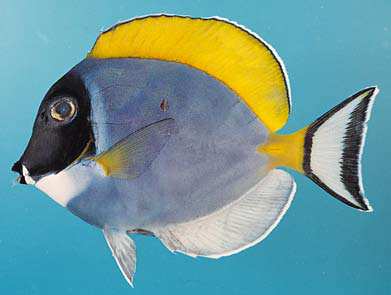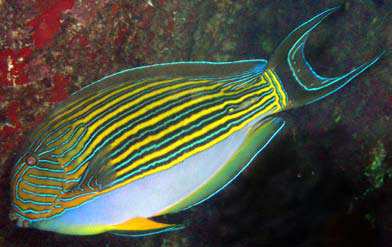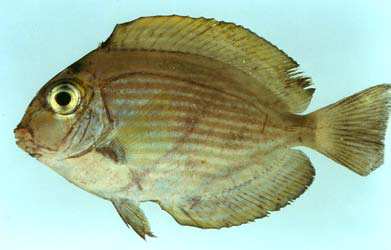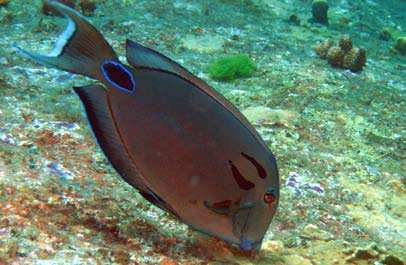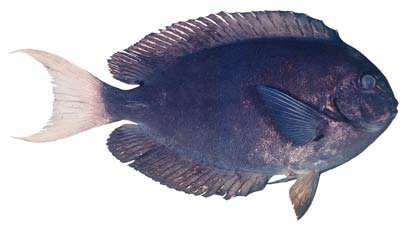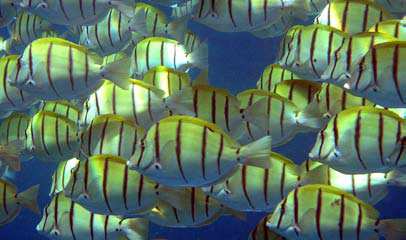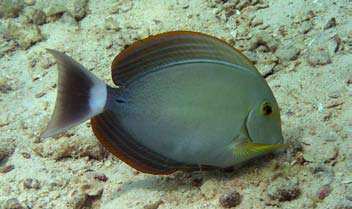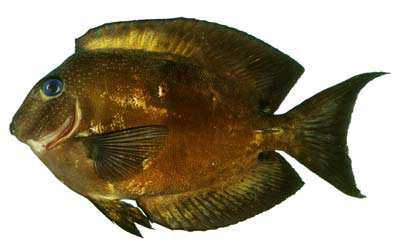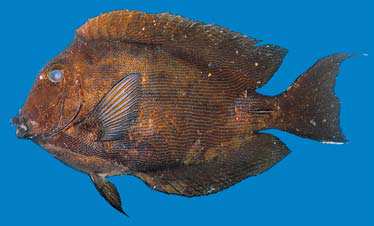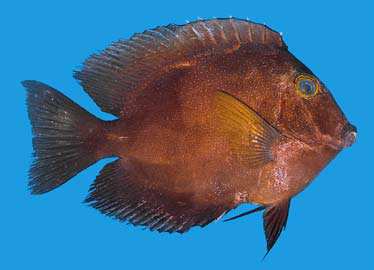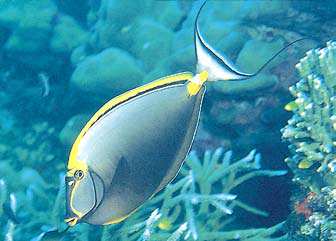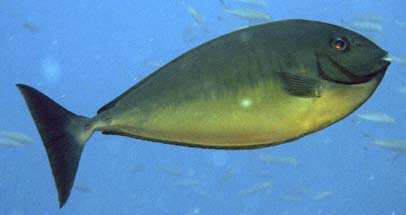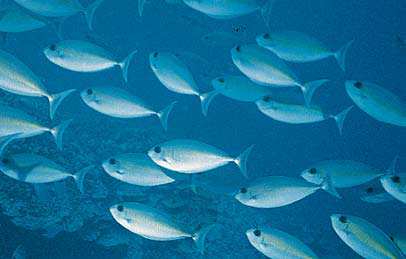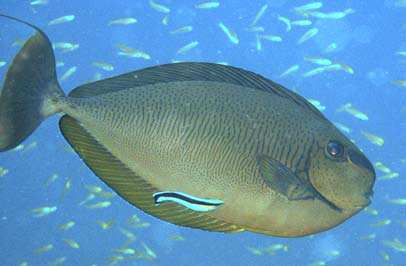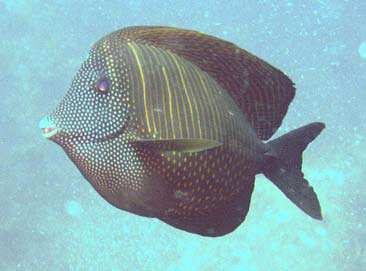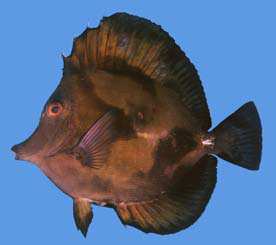ACANTHURIDAE
Surgeonfishes
By Hisashi Imamura
|
High-bodied, compressed fishes (size to about 75 cm) with very small ctenoid scales. Eye high on head. Mouth small, terminal; premaxilla not protractile. Small close-set teeth on jaws; no teeth on roof of mouth. Dorsal fin continuous with IV-IX spines and 19-33 soft rays. Anal fin with II or III spines and 18-28 soft rays. Caudal fin emarginated to lunate, with 16 principal rays. Pectoral fin with 14-18 rays. Pelvic fin with 1 spine and 3 or 5 soft rays. Side of caudal peduncle with sharp spine(s). Color: usually predominately brown to gray, but some species very colorful. Similar family occurring in the area. Siganidae: pelvic fin with 2 spines and 3 soft rays between them; dorsal fin with 13 spines; anal fin with 7 spines. Zanclidae: snout protruding; premaxilla protractile; dorsal fin with a long filament from 3rd spine; no spine or keels on caudal peduncle. Remarks. Acanthurids occur on coral reefs or over rocky substrata, generally at depths less than 100 m. It is divisible into 3 subfamilies: the Acanthurinae, Prionurinae and Nasinae. |

|
|

